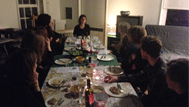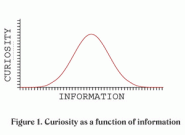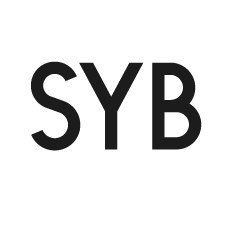7 till 14 January 2014
CASUS APICE FOR ARTISTS
Daniela Apice

“How do I keep a gallery: 20 helpful tips for the contemporary practice” Alas: a manual like this isn’t available in the bookshop. Running a gallery is something you learn on the shop floor where scraping together to cover overheads quickly becomes at the expensive of the open, experimental attitude you initially had in mind. Daniela Apice recently decided to move her gallery from a rented space on the Van Ostadestraat in Amsterdam to her own living room. A move that takes a lot more doing than a simple change of address. During her residency at SYB, Apice researches the implications of this move as a starting point for a broader research into the role of the gallery in current times.
Apice for Artists shows artists in the early stages of their career and enters into a prolonged collaboration where not so much the product takes centre stage as the creative process. With this, Apice attaches significant value to conversation, for the exchange of notions and ideas is precisely what offers the public access to the artist’s thought process. But how do you present a discussion to the public? Is it even possible to run a gallery at all starting from the artistic research of the artist?
Daniela Apice began in 2009 by showing artists in the stairwell of the artists’ initiative space P/////AKT (Platform Beeldende Kunst, East Amsterdam). From this interesting, yet spatially restrictive context the gallery moved to a ‘white cube’ in 2011, where artists were given the opportunity to present their work with heightened concentration. In the period leading up to the opening of the gallery in its new, domestic context, SYB offers Apice seclusion, peace and quiet, and an intimate space in which to experiment with possible formats. Sat at the kitchen table in Beetsterzwaag, Apice enters into a dialogue with all manner of contemporary art world players including gallery owners, artists and independent curators. During these discussions she searches for the right form of representation and presentation within the contemporary gallery practice in general and in particular for Apice for Artists.
The project in Kunsthuis SYB can be described as kneading and shaping a ball that will subsequently roll through the art scene landscape, continually gathering more information, insights and ideas that can help the gallery owner to determine their position in current, turbulent times.
Working period:
07 January – 14 January
Opening times for working period:
every Saturday and Sunday 13:00 – 17:00
APICE FOR ARTISTS
by: Judith Spijksma
translation: Jenny Wilson
‘How do I deal with the artistic process, for instance with in between moments where nothing is fixed and there’s room for interaction and dialogue?’ It’s one of the questions concerning Daniela Apice during her stay in Beetsterzwaag. In 2009, Apice began showing work by young artists in the stairwell of the artists’ initiative space, P/////AKT (Platform Beeldende Kunst, East Amsterdam). In 2011, she moved to a space in the Van Ostadestraat in Amsterdam where she set up the gallery, Apice for Artists. Now after two years, Apice is leaving the Van Ostadestraat to continue her gallery in her own living room. This move, and all the implications it brings with it, is the reason for Apice to reconsider her position as an intermediary in the contemporary art world. During her stay in Kunsthuis SYB she speaks with various people from the art world via email and Skype and discusses her current position during a dinner.
Daniela Apice is a gallerist who not only wants to offer artists a stage, but also intensive coaching. The artists she works with are young, often recent art school graduates or post-graduates as well as those in the beginning stages of their careers. It is precisely in this category that Apice wants to make a contribution to the creative process, not just helping to facilitate but also to inspire, think along and be critically involved with the artist.
She enters into a dialogue with the artist. To her, this conversation, the interaction and collaboration between herself and the artist, is more important than the end product. She prefers to work from a point where nothing has been decided yet and nothing is definite. This way, there is every opportunity for making choices without becoming restricted by a preconceived or existing framework.
Just like the artists she works with, Apice herself is also a beginning player in the field of contemporary art. In Kunsthuis SYB, she now turns herself and her position in relation to the artist and art lover into the topic of conversation. She spoke with various players in the art world. She asked for their opinions and views that could further her in terms of creating a context for her own practice. The work of curator and author Anthony Huberman was also discussed during one of her conversations.
In her presentation, Apice incorporated texts and readings by Huberman. For instance, a film of one of his lectures could be seen in Kunsthuis SYB. His name could also be found on various readers on the table, where an array of books and texts had been collected in kind of a mind map. In his text ‘How to behave better’ Huberman places an emphasis on the behaviour of artists. Not so much in what they make but more in how they go about it, how they behave as an artist. He distinguishes two types of artists in art history; the boxer (Pablo Picasso) and the chess player (Marcel Duchamp). One wins by hitting the hardest, shouting and directing attention to himself, full of bravado. The other knows he can defeat his opponent by making intelligent and strategic decisions. Both types are playing a game within a framework, a set of rules they subject themselves to and where winning is the most important goal. In these times, Huberman observes, a number of artists reject the notion of following or breaking rules. Instead of playing within an existing framework, they throw the entire game on its head by developing their own playing field. According to this principle, artists don’t play to win but proceed in an endless game without a concrete, end goal. The rules of the game are continually changing and discovered anew. The only goal is to keep on playing.
Huberman attaches significant value to a similar process regarding the viewer when looking at art. This process is simply illustrated in his lecture by means of a graph.

This graph describes a number of stages, which together form a cycle. The horizontal line starting on the bottom left describes a situation where no information enters and too much input is present to stimulate curiosity. Upon following the line we enter into a situation where we see something or hear something we don’t know or even knew existed thus evoking a degree of curiosity. This curiosity then leads to all sorts of new interpretations and speculations. This will eventually lead to answers we can agree on and as such the unknown gradually becomes something we know and understand. Art at best stimulates (mental) activity in the viewer, bringing them into a productive state from not knowing to searching for answers and significance and thus towards new knowledge. At the same time, says Huberman, it is precisely art that is able to question existing knowledge, that which we believe to know for certain. Art can lead the viewer into a process of doubt regarding what we think we know, a process of speculation and interpretation in order to gain new knowledge and insights. It involves the viewer in the activity of the ‘mutual attempt to understand the world’.
The not knowing and the relating curiosity appears to embody the most attraction for Apice. This was the first time that Apice had turned herself into the topic of conversation during her residency at Kunsthuis SYB. The result is an associative presentation in which a lecture by Huberman demanded the most attention. A presentation that raises questions about the role of art and the possibilities for a gallery in the Netherlands but also about the role and position of somewhat smaller art institutions. The questions that Apice has formulated in the context of moving from the white cube to the living room will need to be answered in practice. In any case, Apice has gained the necessary reflection and information from her teammates and found a voice that will surely have an impact in her living room soon.
This review was written as part of the SYB review programme. This review can be freely published providing permission is requested and granted by SYB beforehand.
